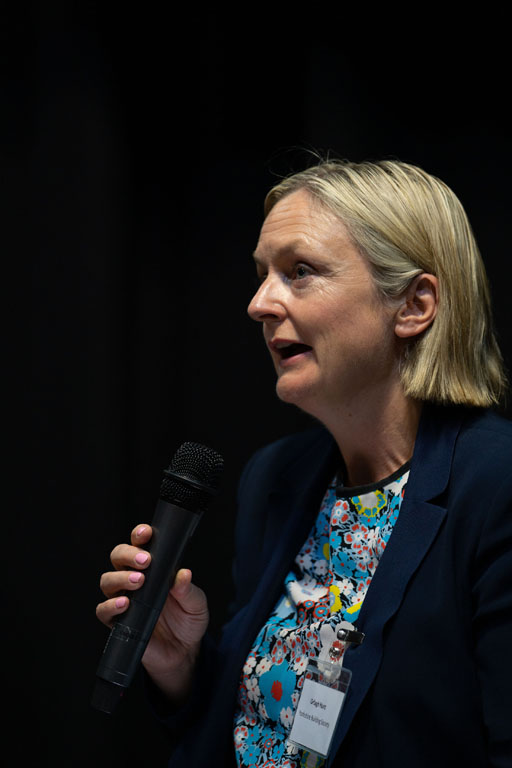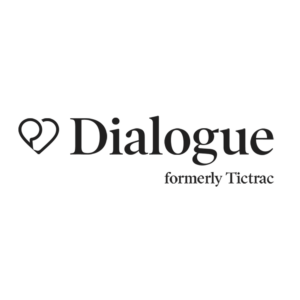The HR World speaks to industry leaders about their careers and life – what advice would they pass on and what wisdom brought them to where they are now.
We all know the statistic that 70% of change initiatives fail to deliver intended value. Think about that – that means that for every work week spent on change, 3.5 workdays are wasted.

18 May 2023

Story by
Orlagh Hunt, Chief People Officer, YBS
We all know the statistic that 70% of change initiatives fail to deliver intended value. Think about that – that means that for every work week spent on change, 3.5 workdays are wasted. Why does this happen and what can we as HR professionals do to ensure our programmes are in the 30% that are successful?
Start with where people are at!
Too often management teams who have worked on change programmes behind closed doors and have come through the change curve themselves, launch changes to people with jazz hands and optimism. They fail to recognise that the people they are talking to are at the other end of the change curve and are in the weeds of their current reality. This causes a disconnect which can really lessen your chances of bringing people with you. We have to remember that people find change difficult – even when it’s positive change. Why is this? There are clues in behavioural economics, things like status quo bias, a human preference for keeping things the same and loss aversion – the tendency to prefer to avoid losses more strongly than acquiring gains – then layer on organisational factors like unclear or competing demands and we can see why this might be the case.
Case for change – the big why
Too often when it comes to change, leaders launch straight into what needs to be done without being clear on the why. When you’re launching a change or a new strategy, it’s vital to spend a good chunk of time laying out the case for change (the why) in a way that resonates for people. If people connect rationally and emotionally with the why, they are much more likely to commit to the what and take personal ownership to drive the change.
As leaders we have big eyes
We look out into our organisations and see lots of things that we feel need to change. For example, I recently talked to an organisation that had 70 items on their transformation road map. That level of ambition is great but colleagues can’t hold all of that in their heads so it fails to galvanise people in the direction you want them to go. Done well, a clear articulation of the big three or four things that need to change with a clear why can act as guide for colleagues when they need to prioritise or make a tough call. When it comes to communicating change, you can’t just roll out a version of the Board deck as it will blow people’s heads. You need to work hard to make it simple and compelling for them and above all, keep up the drumbeat. I’ve seen so many changes fail because they start with a fanfare and then fizzle out. The launch is just the beginning and the crucial part is the embedding and the drumbeat that come after.
Badly handled change – it’s often not people’s first rodeo!
When we don’t pay attention to the human side of change, we can create real difficulty for our colleagues. According to Gartner, it can take up to two years to psychologically recover from a piece of badly handled business change. So given the rate of change in organisations, we can be layering this stress of badly handled change on people multiple times. To avoid this, we need to spend as much time thinking about the people side of change: communication, leadership etc. as we do about the systems, processes and milestones.
Create a movement
Once you have built the compelling case for change and got people excited about the future, it’s really important then to identify small actionable steps that people can take immediately. This helps to anchor the change in day-to-day work as opposed to them feeling this is something going on elsewhere that they don’t have to do much about.
There is a theory in learning that you need to practise a new skill within 48 hours to start to anchor it so the more that individuals and teams can start to make changes quickly whilst their motivations are high, the better.

Then if it can be anchored in the day to day of the work the easier it is for people to build new habits and you have the start of a movement.
Invest in leadership – not just change capabilities but mindsets too
A lot of the time, leaders believe they are better at leading through change than their people think they are. As HR professionals, we need to hold up the mirror and give leaders the support to better engage themselves and their people through times of change. And this has to be about helping them have the right mindset, not just the right capabilities. For example, you can upskill a leader to be a great communicator, but if they see the people side of change as fluffy and a barrier to getting things done, they will fail to engage and bring their people with them. So, we need mindset shifting, not just capability building when it comes to delivering sustainable change.
Treat people like adults and help people be future confident
When it comes to communicating change to colleagues, it’s easy to fall into the trap of the Chief Good News Officer syndrome where we want to protect people from hearing any tough messages and only focus on the positives. This approach, while coming from a good place, can destroy trust and damage credibility. We must remember that we are leading adults and people deal with tough messages outside of work all the time. Talking empathetically and honestly with colleagues and thinking of ways to involve them in the change is an adult way of doing things. It not only builds trust but also increases buy-in and commitment. We can’t shield people from the changing world we’re in, but we can give them the tools to help navigate uncertainty and help them be more confident which is a win for everyone.






